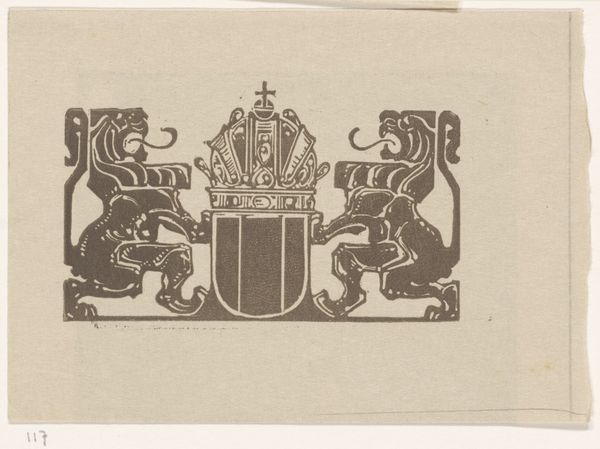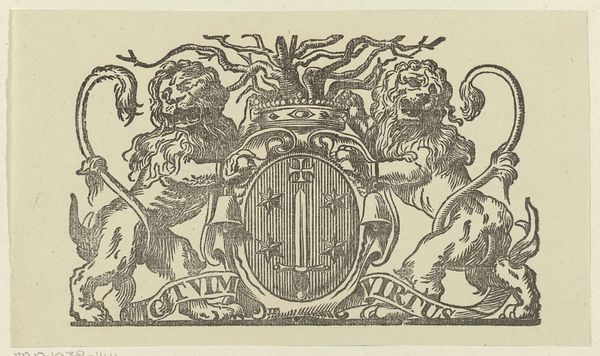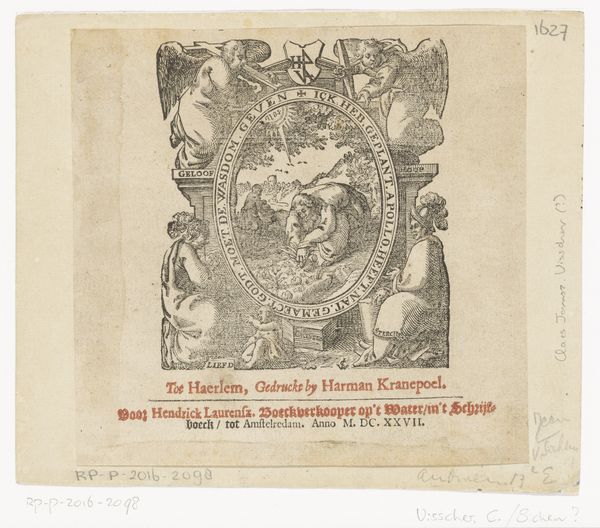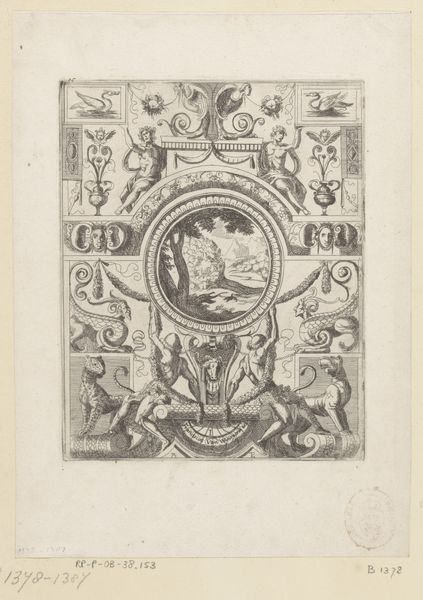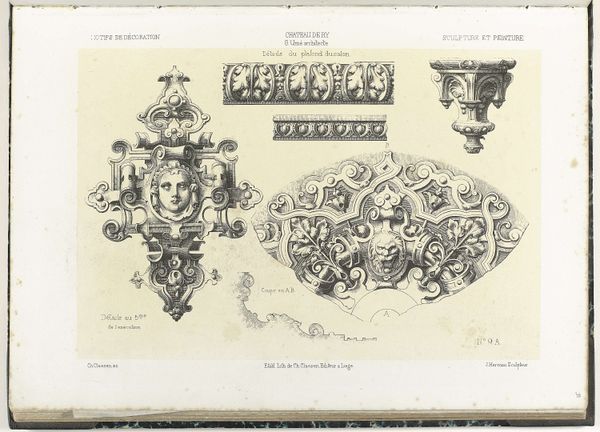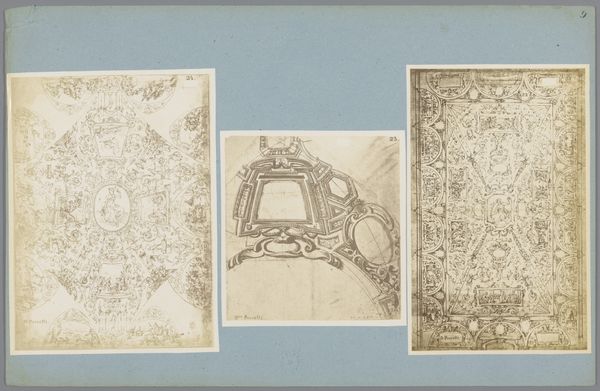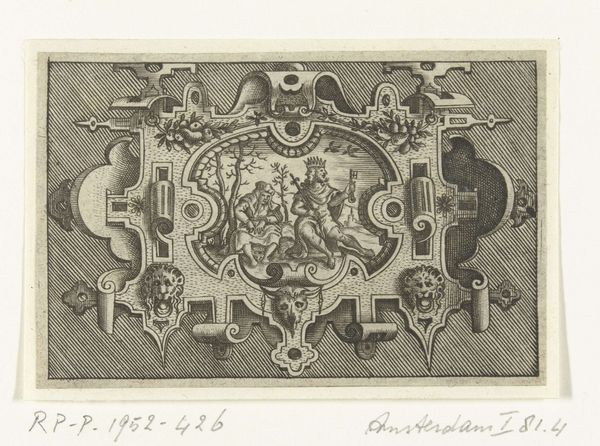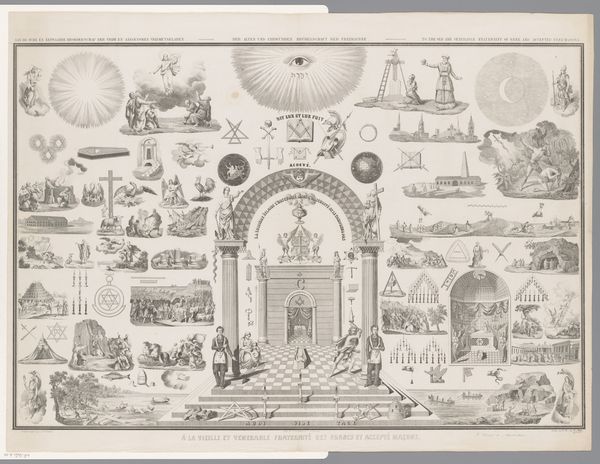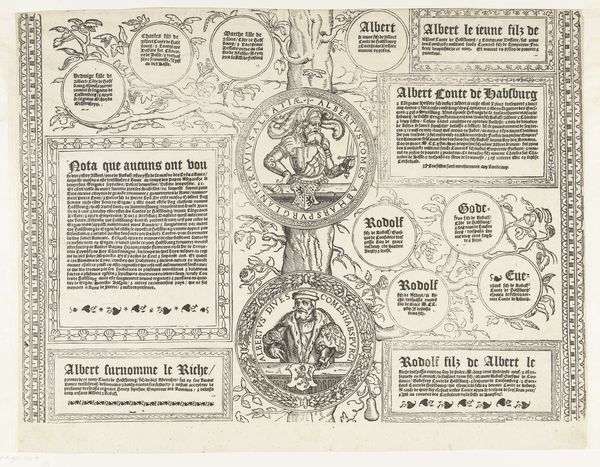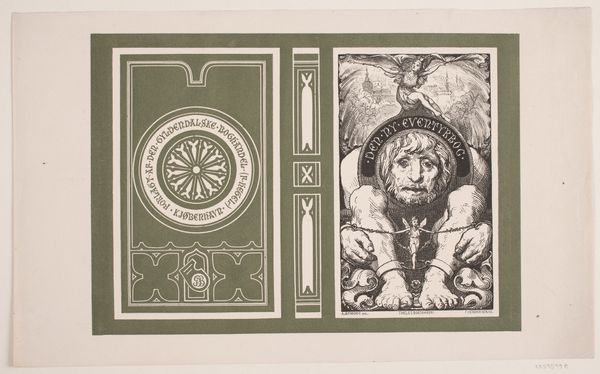
drawing, print, ink, poster
#
drawing
# print
#
ink
#
symbolism
#
poster
Dimensions: height 9.7 cm, width 14.6 cm
Copyright: Rijks Museum: Open Domain
Curator: This drawing, created by S. Viskoper in 1918, is called “Onbeschreven briefkaart,” which translates to “Unwritten Postcard.” The poster is made from ink on both paper, in order to create a poster print. The somber gray tones and stylized imagery really grab my attention. It has an ethereal almost dreamlike quality, and a heavy symbolic quality that is in dialogue with the political. Editor: Indeed, the restrained palette certainly sets a tone, focusing attention on the contrasting symbolism. Look at how Viskoper has arranged three vignettes. On the left, a monument representing independence reclaimed in 1813. And on the right? A monument commemorating holding independence through "eigen kracht," or one's own power between 1914 and 1918, which alludes to Dutch neutrality during the First World War. And that triumphant lion overpowering a dragon motif right in the middle. Curator: The balance and symmetry create a satisfying visual rhythm. The art nouveau flourishes framing the title add to this design cohesion, contrasting yet complimenting the angularity of the monuments flanking the imagery of the lion's power. What exactly is it, that dragon motif seems somewhat confusing from an artistic point of view... Editor: Consider the period. Postcards at the time often circulated nationalistic messaging. Viskoper employs symbolism strategically. The lion, the Dutch national symbol, prevails over the dragon. It's an assertion of Dutch identity and perhaps even of resilience given the backdrop of the Great War. While technically neutral, the Dutch people grappled with food scarcity, influxes of refugees, and political divisions. Curator: So you see this visual organization more as an active attempt to define Dutch sovereignty amidst external tensions? Not simply as balanced forms and colors? Editor: Precisely. Viskoper presents "independence" as something actively defended and constantly in tension. Look, even the unwritten nature of the postcard might symbolize the need for individuals to continually participate in the narrative of the nation, even during times of imposed neutrality. Curator: That provides much-needed context! Initially, my eyes saw pleasing composition, an astute play with positive and negative space and how that influenced the mood of its political subtext. Editor: And that close analysis matters. Because understanding Viskoper’s artistic technique encourages us to examine how power manifests visually during pivotal moments in history.
Comments
No comments
Be the first to comment and join the conversation on the ultimate creative platform.
